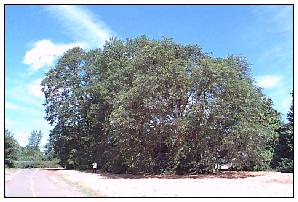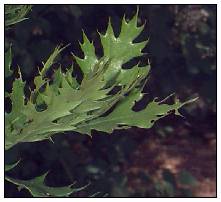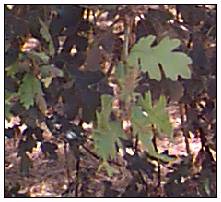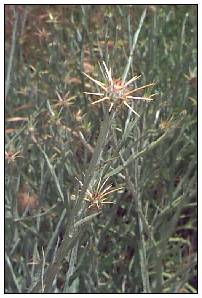The presence of this row of oaks reminds us that much of Bear Creek Valley was once oak woodland, the driest type of forest that occurs in this region. The open understory of the oak woodland, or savannah, was maintained by fire, which burned off the brush and encroaching conifer seedlings. These fires started naturally or were set by the Indians. Processed acorns were a staple food of the local Takelma, who preferred acorns from black oaks like the ones before you. Black oaks (Quercus kelloggii) grow best in woodlands and have leaves with pointed lobes. The typical white oak (Quercus garryana) setting is an open grassy hillside; the lobes of their leaves are rounded. Are any of these trees white oaks?
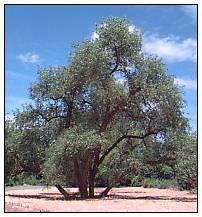
 Medford Station 3: Ancient Cure—Modern Medicine
Medford Station 3: Ancient Cure—Modern Medicine